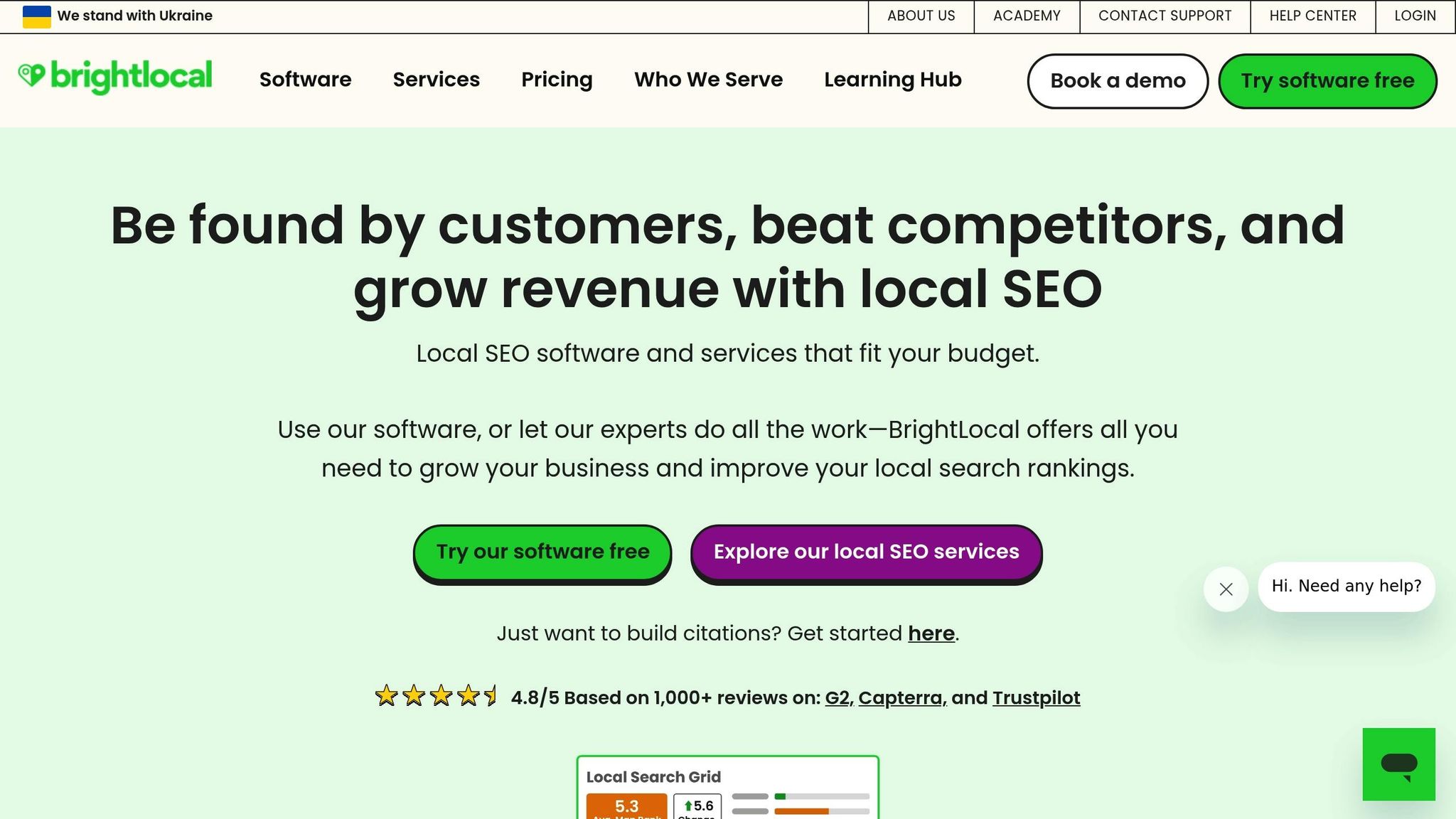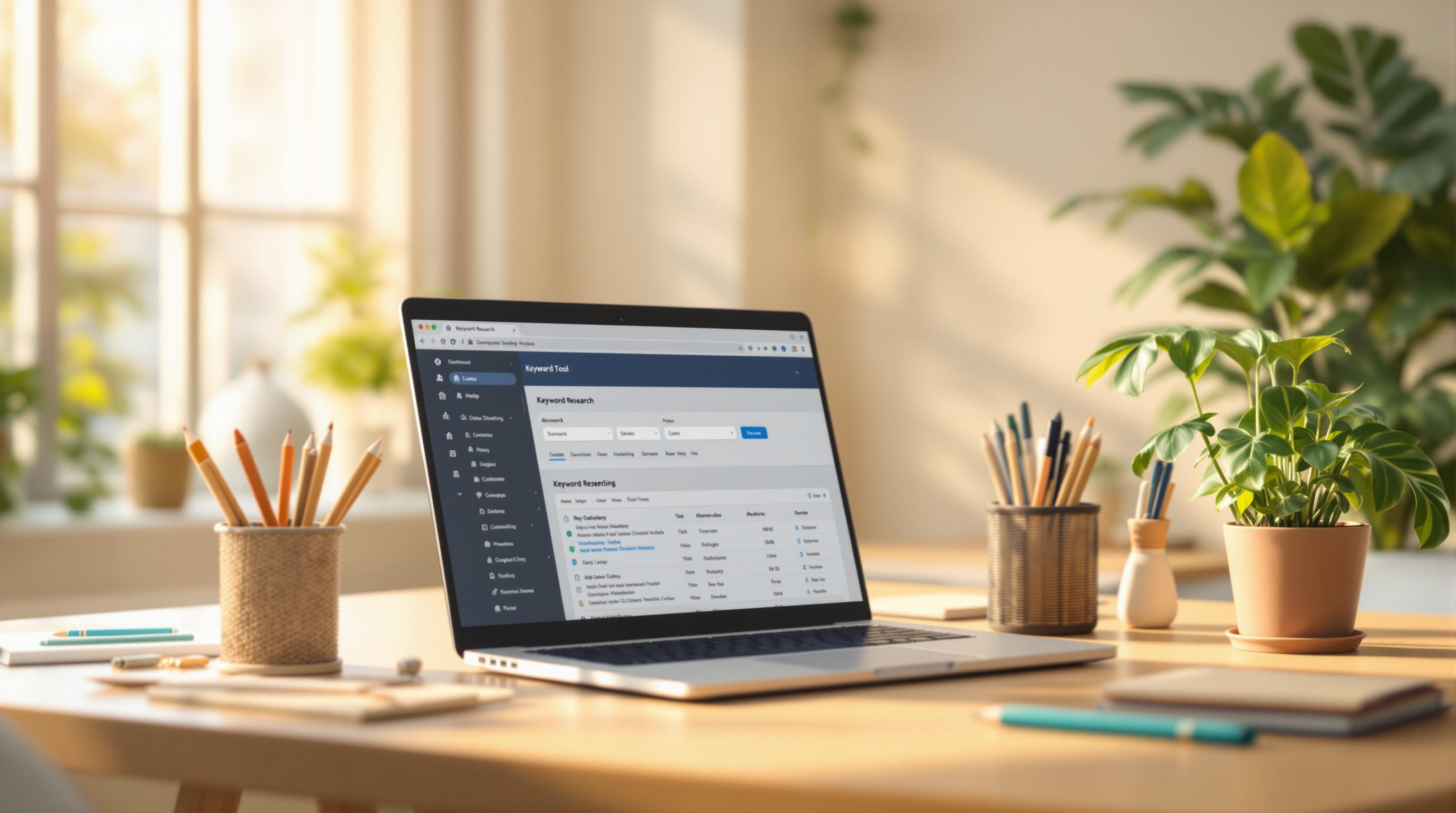Here’s a 6-step process to uncover what’s working for them and how you can improve your local SEO:
-
Find Your Competitors
Search for local businesses offering similar services. Use Google’s local pack, organic results, and SEO tools to identify 5–10 competitors. -
Analyze Google Business Profiles
Study how competitors optimize their profiles - categories, reviews, photos, and updates. -
Track Local Keywords
Monitor their rankings for location-based keywords and discover gaps you can target. -
Review Website Content
Look at their site structure, local landing pages, and how they use location-specific keywords. -
Check Backlinks
Identify where they’re getting local backlinks - directories, news outlets, or community events. -
Fix Technical SEO
Ensure your site is fast, mobile-friendly, and optimized with local schema markup.
Why this matters:
Competitor analysis helps you find quick wins, refine your strategy, and build a roadmap for long-term local SEO success. Start small - optimize your Google Business Profile and track keywords - then expand to content and backlinks.
Take action today and revisit your analysis every 3–4 months to stay ahead.
Performing Local Competitor Analysis with BrightLocal ...

Step 1: Find Your Direct Local Competitors
Start by identifying your local competitors through a mix of targeted searches and SEO tools.
Search Google for Local Competitors
Run local searches that your potential customers might use, such as:
- "[service/product] near me"
- "[service/product] in [city name]"
- "best [service/product] [neighborhood/district]"
Pay attention to businesses that appear in:
- Google's Local Pack (the map with three business listings)
- Top organic search results
- Local business directories
To get unbiased results, use an incognito browser window and test searches from different locations within your target area. This helps you see what potential customers see and avoids personalized search results.
Use SEO Tools to Expand Your Search
Leverage SEO tools to dig deeper. These tools can help you:
- Track local keywords
- Analyze competitor websites
- Review backlink profiles
- Identify businesses with strong local visibility
For a list of recommended tools, visit the Top SEO Marketing Directory. Combining manual searches with insights from these tools gives you a more complete picture of your competition.
Build Your Competitor List
Create a list of 5–10 competitors that frequently rank for your target keywords, serve your area, and appeal to similar demographics. For each competitor, note:
- Business name
- Location
- Services offered
- Target neighborhoods
- Strengths in local search visibility
Keep this list updated as you move forward. It will serve as the foundation for deeper local SEO analysis in the next steps.
Step 2: Check Google Business Profile Details
Review Basic Profile Information
Take a close look at competitors' Google Business Profiles to see how they approach local SEO. Pay attention to:
- Business name and categories: See how they position themselves.
- Review volume and average rating: Get a sense of their reputation and customer satisfaction.
Analyze Optimization Strategies
Go beyond the basics. Look at how competitors keep their profiles updated, handle customer feedback, and stay visible in local searches. These details can provide useful ideas for improving your own profile.
If you want to track Google Business Profile elements systematically, check out tools listed on the Top SEO Marketing Directory.
Step 3: Track Local Search Rankings
Keep an Eye on Competitor Keywords
Use rank tracking tools tailored to your service areas to monitor how you're performing in local search. Focus on these key aspects:
- Rankings specific to each location you're targeting
- Branded terms and their variations
- Service-related keywords combined with location modifiers
For tools, check out resources like the Top SEO Marketing Directory. The data you gather will help you uncover keyword opportunities worth pursuing.
Spot Keyword Opportunities
Your rank tracking data is a goldmine for discovering high-traffic keywords. Here's how to make the most of it:
- Look at your competitors’ top-performing local keywords, paying attention to search volumes and ranking difficulty.
- Identify areas where you're close to overtaking competitors and focus on those for quick wins.
- Develop a plan based on factors like search volume, how relevant the keyword is to your business, and the level of competition.
SEO tools simplify this process, helping you turn local market data into actionable strategies.
sbb-itb-5be333f
Step 4: Study Website and Content Strategies
Check Site Organization
Take a close look at how competitors structure their websites to pick up on local SEO tactics. Pay attention to:
- URL structures for location-based pages
- Navigation menus and how they guide users
- Internal links connecting service and location pages
- Footer layouts with local business information
Using tools from the Top SEO Marketing Directory can simplify this process and help you identify patterns in successful competitor sites.
Once you've reviewed their structure, dive into their content approach for local areas.
Analyze Local Content
Explore how competitors create content tailored to specific locations. Look for:
- Dedicated landing pages for various locations
- Detailed service descriptions for each area
- Local customer testimonials to build trust
- Coverage of community involvement or events
- Use of images and media relevant to the area
Effective local content often includes:
- Mentions of local landmarks and neighborhoods
- Area-specific pricing details
- References to local regulations or requirements
- Topics that resonate with the local community
After reviewing their content, shift your focus to their on-page SEO strategy.
List On-Page SEO Elements
Analyze key on-page SEO elements that competitors use. Here's what to focus on:
| Element | Details |
|---|---|
| Title Tags | Include location + service keywords |
| Meta Descriptions | Signal local intent |
| H1-H6 Headers | Use geographic terms effectively |
| Image Alt Text | Add location-specific descriptions |
| Schema Markup | Highlight local business attributes |
| NAP Information | Ensure consistency across pages |
Keep an eye out for:
- Strategic use of location modifiers in key elements
- Proper implementation of local business schema
- Accurate and consistent NAP (Name, Address, Phone) details
- Seamless integration of location-specific keywords into content
This approach will help you identify the strengths of your competitors' strategies and apply those insights to your own website.
Step 5: Research Local Backlinks
Check Backlink Sources
Using your competitor list and content strategy, take a closer look at their backlink profiles to uncover quality local link opportunities. SEO tools can help you evaluate:
- Link quantity: Number of referring domains and backlinks.
- Link quality: Metrics like domain authority and trust scores.
- Link relevance: Whether links come from local or non-local sources.
- Link velocity: How quickly they’re acquiring new links.
Focus on securing backlinks that enhance your local presence. Examples include:
- Memberships in Chambers of Commerce.
- Connections with business associations.
- Sponsorships for community events.
- Mentions in regional news outlets.
- Listings in industry directories.
Look for patterns that indicate successful local link-building strategies. Use these insights to target specific sources that will strengthen your own backlink profile.
Find Local Link Sources
Here’s a breakdown of local link opportunities and how they can boost your SEO:
| Link Source Type | Value for Local SEO | Action Items |
|---|---|---|
| Local Business Directories | Enhances local visibility | Submit accurate business details |
| Community Organizations | Builds trust and authority | Join and actively participate |
| Local Events | Boosts geographic relevance | Sponsor or attend events |
| Regional Media | Strengthens credibility | Pitch newsworthy stories |
| Professional Associations | Adds industry recognition | Maintain active memberships |
To maximize results, focus on building relationships that offer:
- Citations from trusted sources.
- Partnerships with businesses that complement yours.
- Sponsorships for community initiatives.
- Guest posting opportunities on local news platforms.
- Profiles in regional directories.
When choosing link sources, prioritize those that:
- Operate in your target area.
- Have well-maintained, active websites.
- Show strong domain authority.
- Are visibly involved in the community.
- Offer content relevant to your industry or audience.
Step 6: Check Technical SEO Setup
After evaluating on-page elements and backlinks, it's time to focus on technical SEO aspects.
Evaluate Site Speed and Mobile Usability
Technical performance plays a key role in local SEO. Use tools like Google PageSpeed Insights or Mobile-Friendly Test to analyze key factors:
| Technical Factor | Role in Local SEO | Key Areas to Inspect |
|---|---|---|
| Page Speed | Affects rankings directly | First Contentful Paint (FCP), Time to Interactive (TTI) |
| Mobile Design | Impacts user experience | Navigation, text readability, tap targets |
| Image Optimization | Improves loading speed | File sizes, compression, lazy loading |
| Local Schema | Enhances search visibility | Business hours, address, reviews markup |
| URL Structure | Helps with crawlability | Organization of local landing pages |
Once you've identified performance gaps, start addressing the issues.
Fix Technical SEO Problems
Here’s a breakdown of common issues and how to resolve them:
-
Local Landing Pages
Ensure URL structures for location pages are clear and logical. Check internal links and confirm canonical tags are correctly applied. -
Schema Markup
Use the LocalBusiness schema to mark up your business details. Validate your address, contact info, and operating hours for accuracy. -
Mobile Optimization
Confirm viewport settings are properly configured for mobile devices. Make sure text scales correctly and touch elements are spaced appropriately. -
Speed Optimization
Look into server response times, caching, and resource compression to improve load times.
Prioritizing Fixes
Use the following checklist to prioritize your fixes:
| Priority | Technical Element | What to Check |
|---|---|---|
| High | Mobile Display | Viewport settings |
| High | Page Load Speed | Load time under 3 seconds |
| Medium | Security | HTTPS configuration |
| Low | Sitemap | Ensure location pages are included |
Addressing these technical elements will improve your site's performance and strengthen its local SEO foundation.
Conclusion: Next Steps
Finish your competitor analysis and use the insights to make practical improvements. Apply structured changes across all six steps of your strategy.
Focus on the areas with the greatest impact by prioritizing your findings:
| Priority Area | Key Actions | Suggested Tools |
|---|---|---|
| Quick Wins | Optimize Google Business Profile, fix technical issues | Localo, ContentKing |
| Medium-Term | Develop content strategy, focus on keyword targeting | SurferSEO, RankActive |
| Long-Term | Build backlinks, restructure your site | LinkResearchTools, Screaming Frog |
Take advantage of specialized tools to streamline your efforts:
- Dataprovider.com helps with ongoing competitor monitoring.
- Localo offers AI-driven optimization for your Google Business Profile.
- Use AccuRanker, Nightwatch, or ContentKing to track rankings and manage technical SEO in real time.
Plan to revisit your analysis every 3–4 months. Keep an eye on metrics like local pack rankings, website traffic, and conversion rates to measure progress.
For tailored strategies, connect with expert agencies through the Top SEO Marketing Directory. By integrating these updates, you’ll strengthen your local SEO strategy and stay competitive in the ever-changing search landscape.


